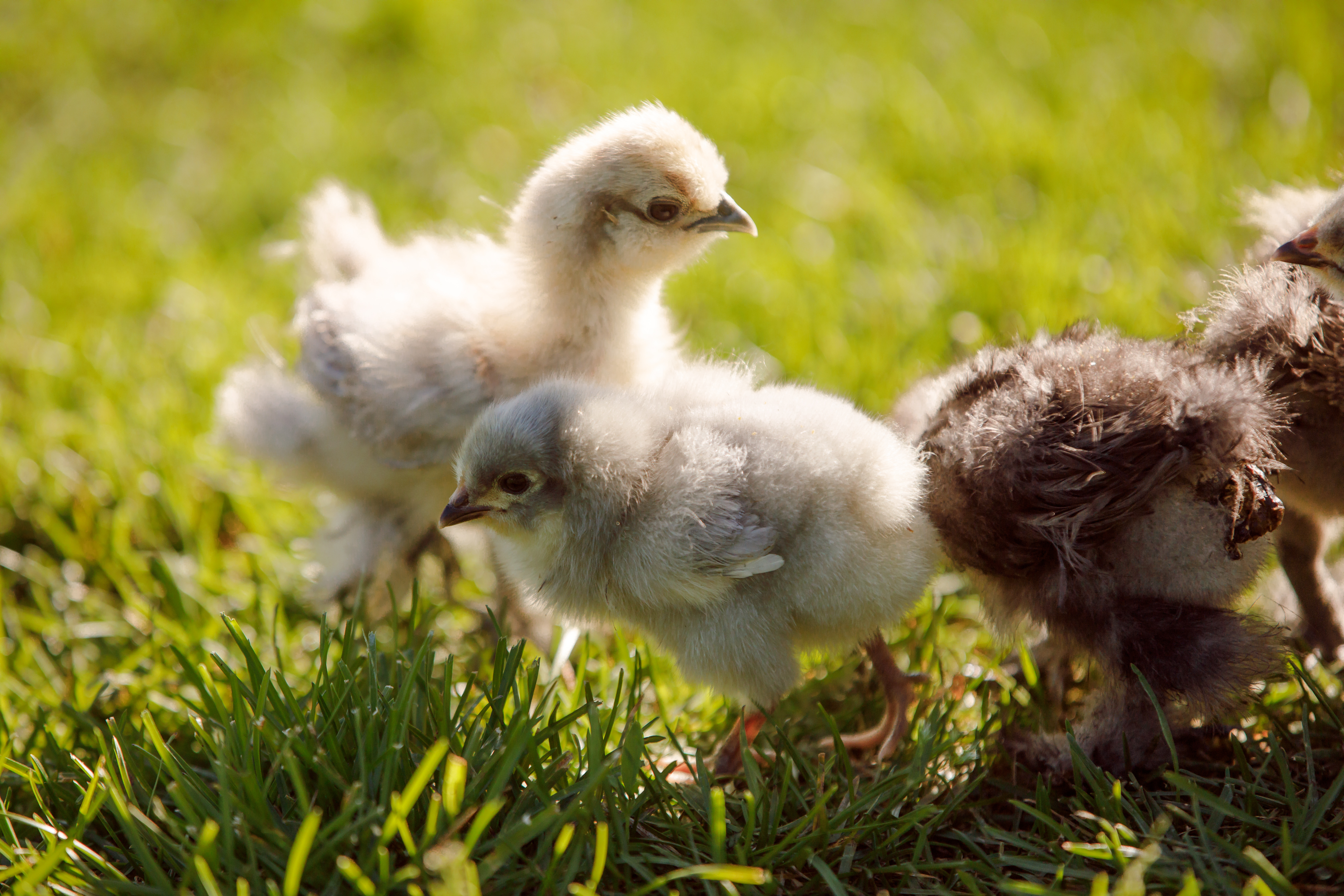Chick Life Stages – What to Expect

You’ve just arrived home with a brimming box of peeping chicks, how exciting! The journey you are about to embark on is an exciting one, so get ready to learn about chick life stages and love those new fluffy creatures.
What to Expect – Week 1:
Before you go to pick up your new chicks, make sure the brooder is ready to go at home. This will prevent any unnecessary stress, for both you and the chicks.
Expect some peeping as the chicks get acquainted in their new environment, learning to drink and eat. They will likely do this for 4 or 5 days.
If the peeping seems to be excessive, make sure you evaluate the brooder for anything that may be causing distress.
A good indicator on temperature is to evaluate where the chicks are located. If they are spread out, they are likely comfortable.
If they are huddled under the heat source, they may be too cold and temperature adjustments should be made.
If they are on the edges of the brooder (not under the heat source) then they are likely too hot.
Don’t forget, the journey to their new home was a long one, so consider providing some bottled water with vitamins and electrolytes for the first 3 days.
Chick Life Stages: What to Expect – Weeks 2-3:
After the first week, their down will start to turn into feathers, and by week 4 you can expect to see more feathers than down.
With adequate food, water and proper temperature, your chicks should be acclimating quite well to their new home.
Don’t forget the importance of brooder maintenance during this time.
To keep odors at bay and cleanliness paramount, make sure you are cleaning out the brooder once a week and adding fresh shavings.
Place the waterer in the corner to prevent dampness throughout the entire brooder.
What to Expect – Weeks 4-6:
At this time, you may notice your chicks starting to test their wings.
At week 6, the brooder is likely getting a little crowded, and you should consider the transition outside to the coop.
It’s wise to choose a nice day to do this, as it will be less of a shock to the birds.
It’s important to note that during this transition, you should make sure your chicks are fully feathered so they are prepared for the elements.
A gradual integration of new chicks with mature hens may be necessary to prevent older birds from picking on the young birds.
A good option is to separate the two groups with a gate or some fencing, so they can be exposed to one another before being fully integrated.
